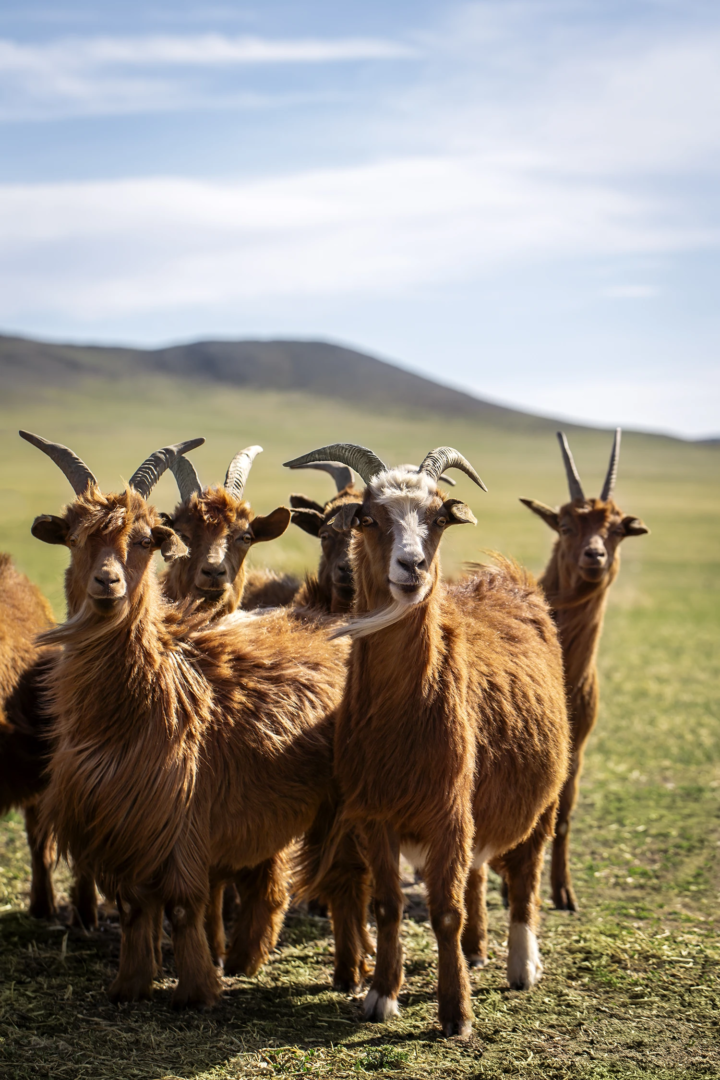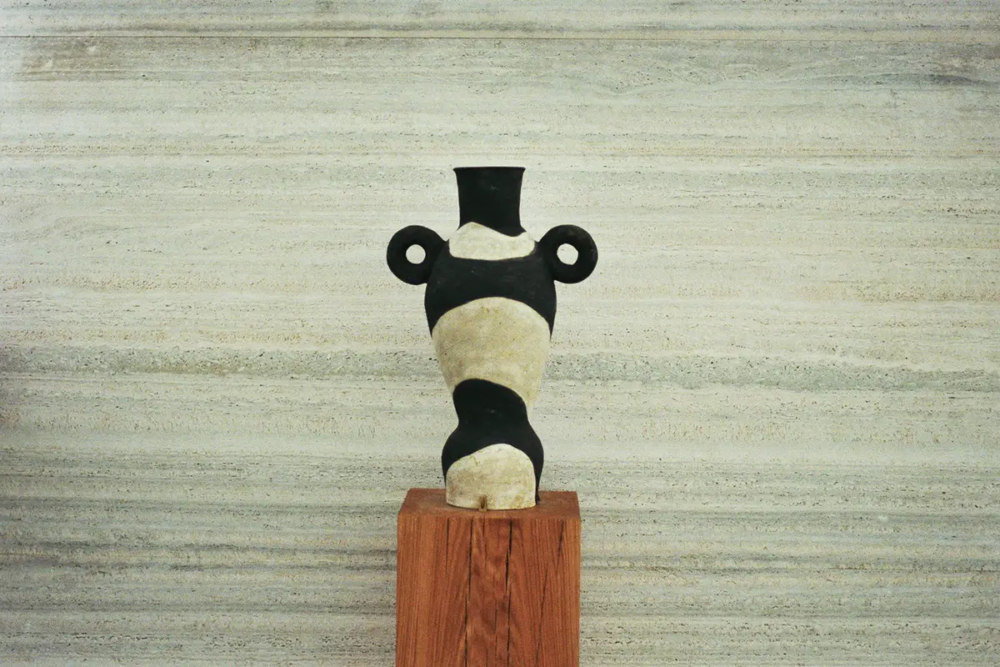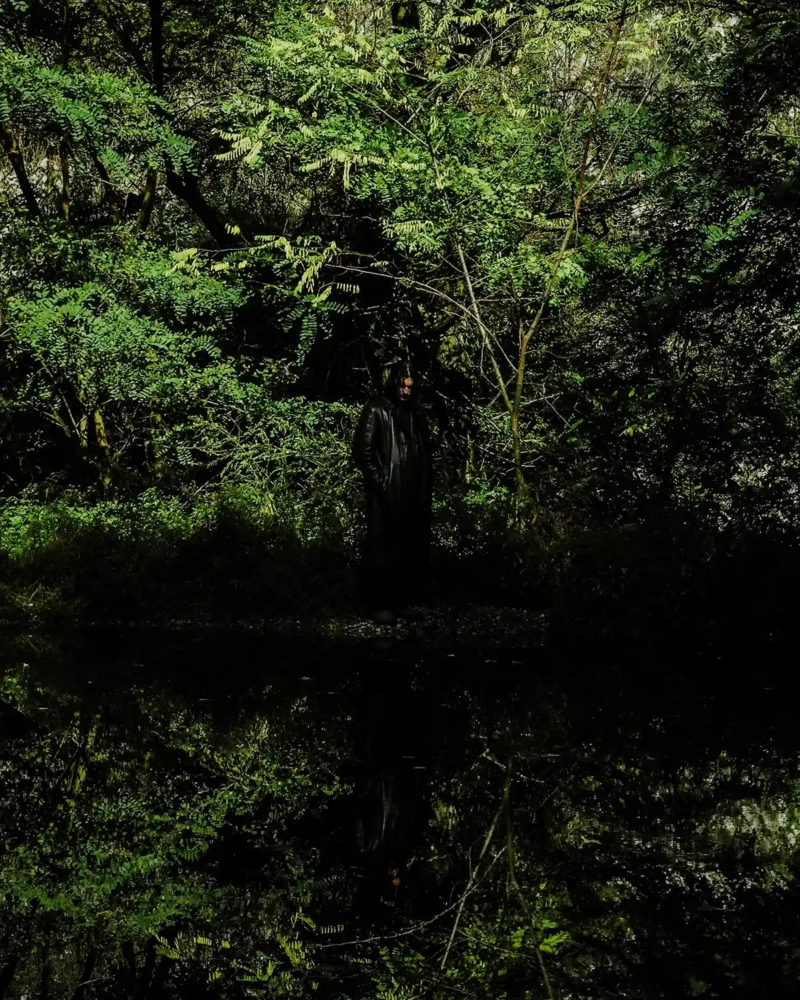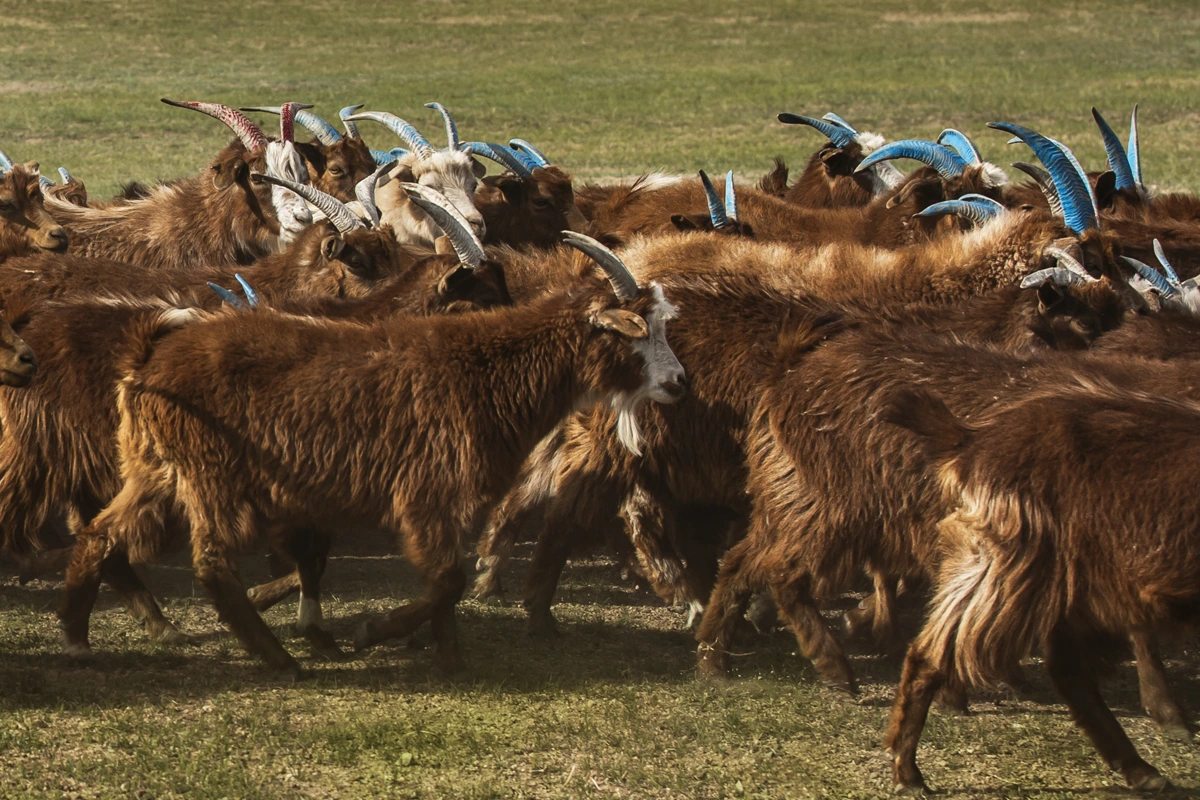
Cashmere and beyond: the infrastructures that hold Loro Piana together
Across continents and climates, from Mongolia’s steppe to Italy’s factories, the infrastructures behind Loro Piana’s materials reveal a complex web of relationships between herders, scientists, and artisans
The fiber that shapes Loro Piana’s identity, rooted in the Eastern steppes
Far away in Inner Mongolia, Capra Hircus persists. Its superfine underfleece grows in response to the harsh desert climate. A biological protection for the animal during winter. The Spring follows, the climate changes. It’s milder, less intense. The goat starts to naturally shed its coat. The herders then collect the fleece. This process, made by nature in response to its own cycles of survival, happens once a year. This is when an Italian brand steps in and takes control of the rest. It’s where the Loro Piana cashmere journey starts.
Cashmere is interwoven with Loro Piana’s DNA. It’s one of the fibers that defined the brand’s identity. The journey started decades ago. The 1980s marked a new period for the Italian house, when Sergio and Pier Luigi Loro Piana started working directly with herders and farmers who took care of the goats. It was a move that secured the millennial heritage of the cashmere sourcing process. In 1986, Pier Luigi Loro Piana took his first trip to China and directly connected with the locals—this is when he formed the chain that would tie the raw materials to the final consumer.

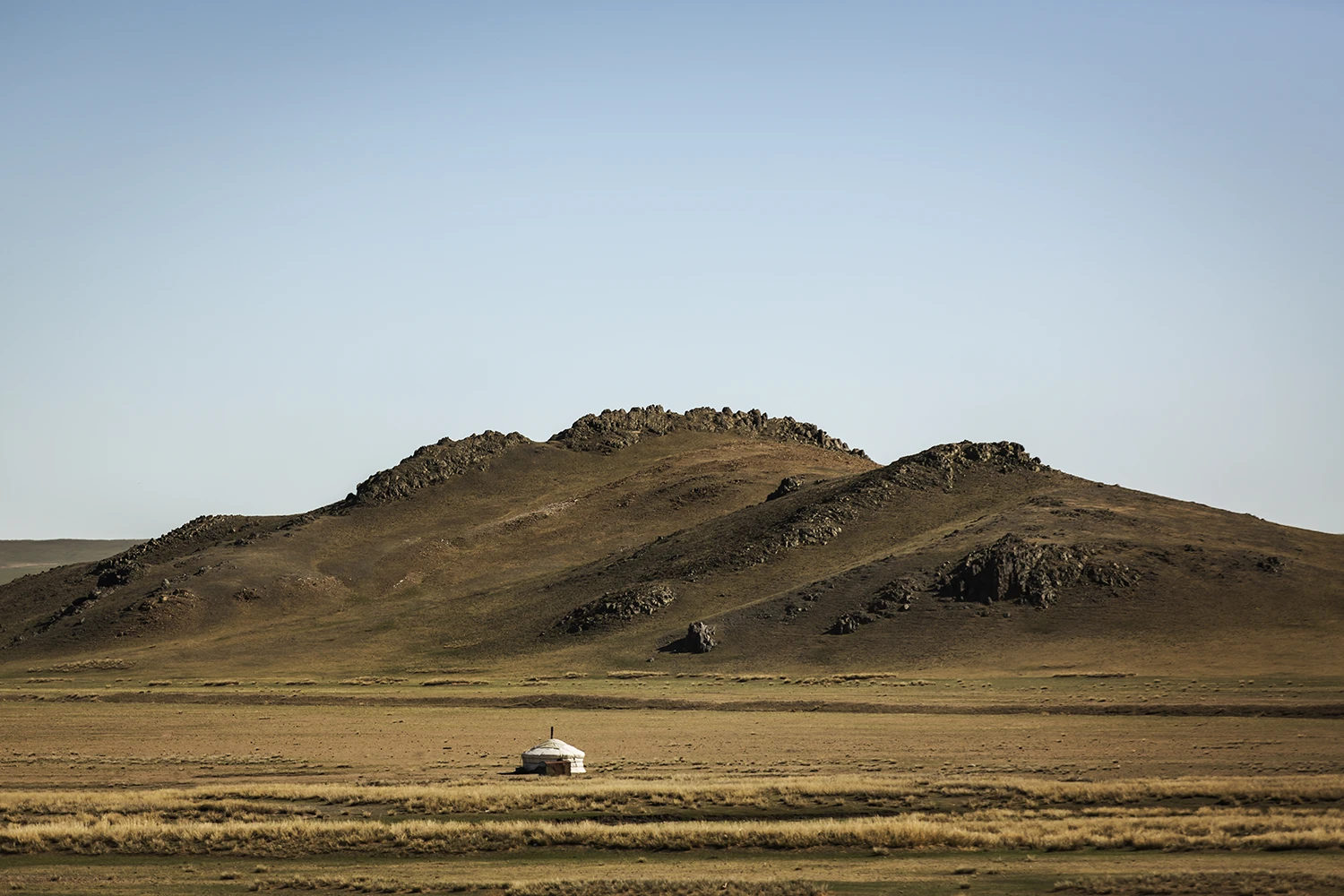
From Mongolian steppe to Italian atelier, each fibre follows a precise path
Loro Piana sources its cashmere from Inner Mongolia (China) and Mongolia. Each goat sheds 450 to 500 grams of underfleece annually. The dehairing process then reduces it to 200 grams. This is the amount of fleece that goes for yarn production. In Ulaanbaatar, Mongolia, the Maison operates its only manufacturing plant outside of Italy, where cashmere fibres are processed, while fostering long-lasting relationships with local cooperatives and collaborating with expert local herders to ensure the transmission and preservation of their centuries-old tradition of fibres sourcing.
It’s a process that takes time and effort, but partnering with local communities is what makes it possible. The Loro Piana Method, starting from 2009, was the program that initiated the chain of activities in Inner Mongolia aimed at that. The goal was to improve the quality of the fiber and optimize the quantity at the same time, preserving the Alashan goat. It’s a collaborative program promoted by the Inner Mongolia Academy of Agricultural and Animal Husbandry, and the Alashan League Institute of Animal Husbandry Research, with the support of Università di Camerino (UNICAM) and the Italian National Agency for Sustainable Economic Development (ENEA). This allowed the brand to strengthen the relationship with the locals, to show the herders their essential role in the entire process, being an integral part of a common goal.
The Cashmere of the Year award
The Cashmere of the Year award, initiated in 2015, further deepened the locals’ commitment. Since then, each year the brand awards herdsmen and suppliers for harvesting the finest cashmere fiber. It became a motivation and a guarantee that quality remains consistent, measurable, and continuously improving. Objective criteria—fineness, length, and performance—form the basis of the selection. A clear progression has been recorded: in 2015, the greasy fiber measured 13.9 microns in fineness; in 2024, a new record was reached at just 12.8 microns. For the herders, it is recognition of their role in shaping the material at its origin. For the brand, it is a way of securing the finest possible fiber at its source, year after year.
Protecting cashmere starts with protecting the local communities who raise it
In May of 2025, Loro Piana presented its Resilient Threads project—a five-year program that supports Mongolia’s herding communities and cashmere cooperatives. Set in the Sükhbaatar Province of Mongolia, one of the most vulnerable parts of the world, the aim is to support herders’ livelihood and keep fibers flowing. The program is focused on five districts of the province, where extreme winters can wipe out entire herds, ruin grazing land, and leave communities struggling for water, feed, and basic health support. At the same time, the program protects Mongolia’s Eastern Steppe, one of the last intact grassland ecosystems in the world.
Building on comprehensive research focused on understanding the climate related risks, the program aligns with Mongolia’s economic, climate, biodiversity, and equity goals: from the beginning, the project has been co-designed with the government, local partners, and herder cooperatives to assess priority needs and strategies.The program takes the holistic “One Health” approach as it considers the well-being and health of people, animals, and the environment as interconnected.
The first mobile One Health Hub
This year, the program will establish the first mobile One Health Hub, reaching remote locations with vehicles to deliver a combination of services including preventive healthcare and vaccination campaigns, trainings, and awareness initiatives on healthcare issues, aligned with the government health programmes. Furthermore, a biodiversity centre will promote rangeland health: a seeds bank will be established to protect and grow some plants that are essential for the interconnected wellbeing of environment, animals, and humans, as they combat soil erosion and act against climate change, have active principles useful for medicinal purpose, or are connected with alimentary supply chain, allowing people livelihood diversification.
This year, Loro Piana also launched Smart Bales, a project that tracks cashmere from Mongolia’s highlands to the Loro Piana factory in Italy. The system digitizes the signature steps of the production chain. It gives information on the fiber’s journey, including the key steps of production. Presented at VivaTech 2025, the process was visualized on a custom table designed by partner MachineZero studio. Smart Bales shows details on the processing stage of the fiber.
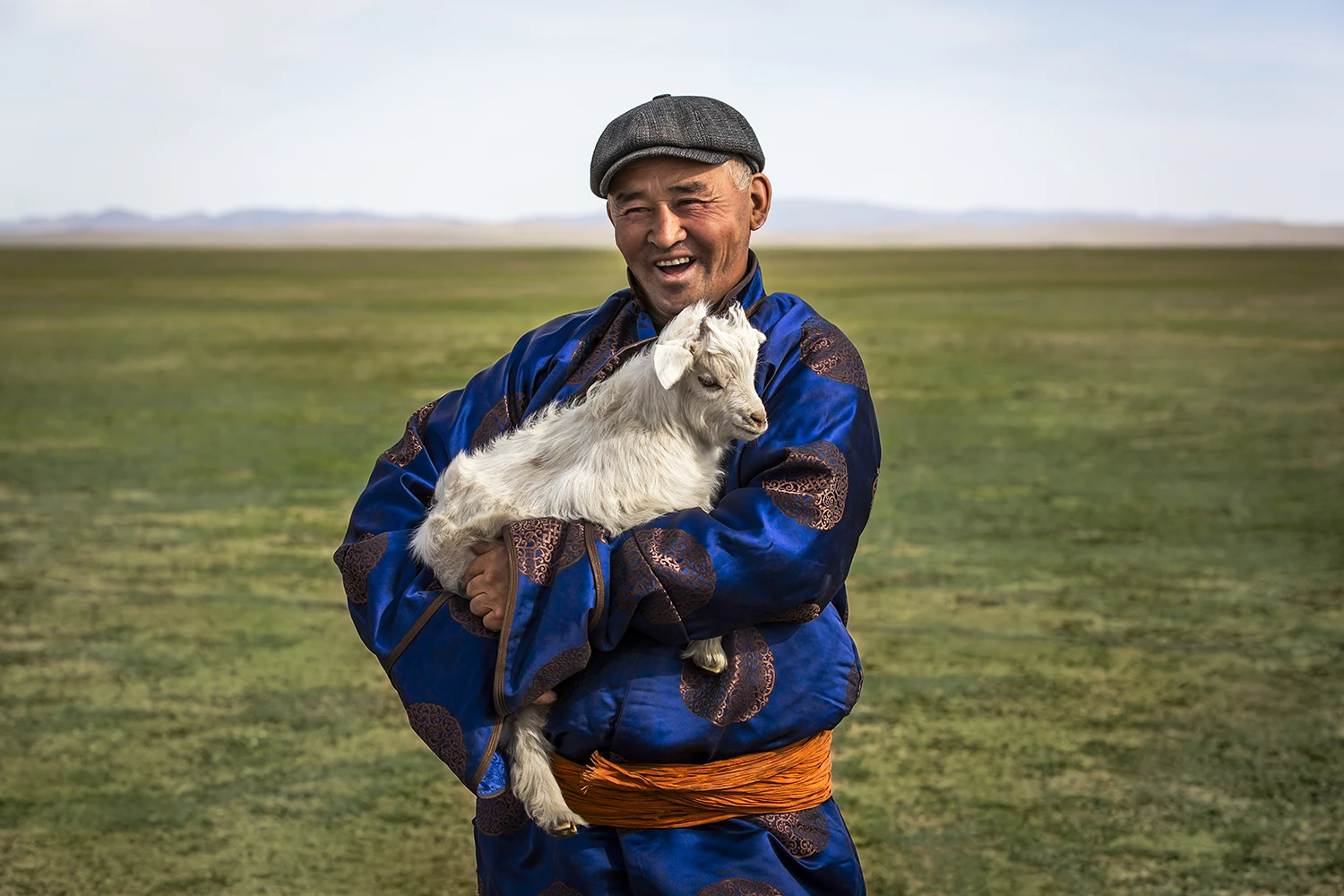

The brand’s fibers network extends beyond cashmere, tracked with similar precision
Cashmere may be Loro Piana’s signature, but wool is its backbone. Merino remains central to the brand’s character. The Tasmanian superfine merino used by the brand comes from Australia and New Zealand. It’s woven to such a density that a full men’s suit weighs barely half a kilo. Then, there is Pecora Nera, the naturally dark wool from New Zealand, which the brand uses in its couture-level cloths. Earlier this year, Loro Piana’s Pecora Nera®is the third treaceable material, following the Gift of Kings in 2023 and Linen Andrè shirt in 2024. The garments now come with QR codes—a blockchain passport that shows the life cycle of the material, from yarn to finished product.
Other rare materials define Loro Piana’s textile range. The lotus flower fiber from Myanmar, pulled from stems and spun into lightweight fabrics that breathe and repel water naturally. The long-staple Egyptian cotton, woven with the same reverence, carefully processed to retain strength, sheen, and longevity.
In 2013, Loro Piana acquired Solbiati, a company that had been a leader in the world of linen for 150 years. Loro Piana linen is now Masters of Linen™ certified, which guarantees that it is produced 100% in Europe, from harvesting to the finished garment. It grows in the naturally humid climate of Normandy, France, and Belgium—regions renowned for producing the world’s finest flax.
For the Italian house, testing, treating, and transforming is what helps make the fabrics water and wind-resistant, temperature-regulating, or softened without compromise.
The Loro Piana lifestyle is an undercover laboratory where testing shapes garments
For Loro Piana, lifestyle is a testing ground. Sailing has long been at the core of the brand’s character. It’s a lifestyle, but it’s also a testbed for innovation. It began with the Loro Piana family’s passion for sports. It served as a platform to test technical fabrics and garments under real-world conditions. Over time, the regatta became a staple in the yachting calendar. It attracted enthusiasts and professionals alike.
In 2024, Loro Piana became the title sponsor of the Loro Piana Giraglia, one of the Mediterranean’s most prestigious offshore races. This was a further commitment to the sailing community. The event, which includes four days of inshore racing in Saint-Tropez followed by a 241-nautical-mile offshore leg to Genoa, attracts a fleet of elite yachts and sailors. The 2024 edition saw strong winds and challenging seas, testing both the endurance of the participants and the performance of the materials used in their vessels. This year, once again, the brand took over the role of a title sponsor for the Loro Piana Giraglia 2025. It took place in June, from Saint-Tropez to Genoa via Corsica.
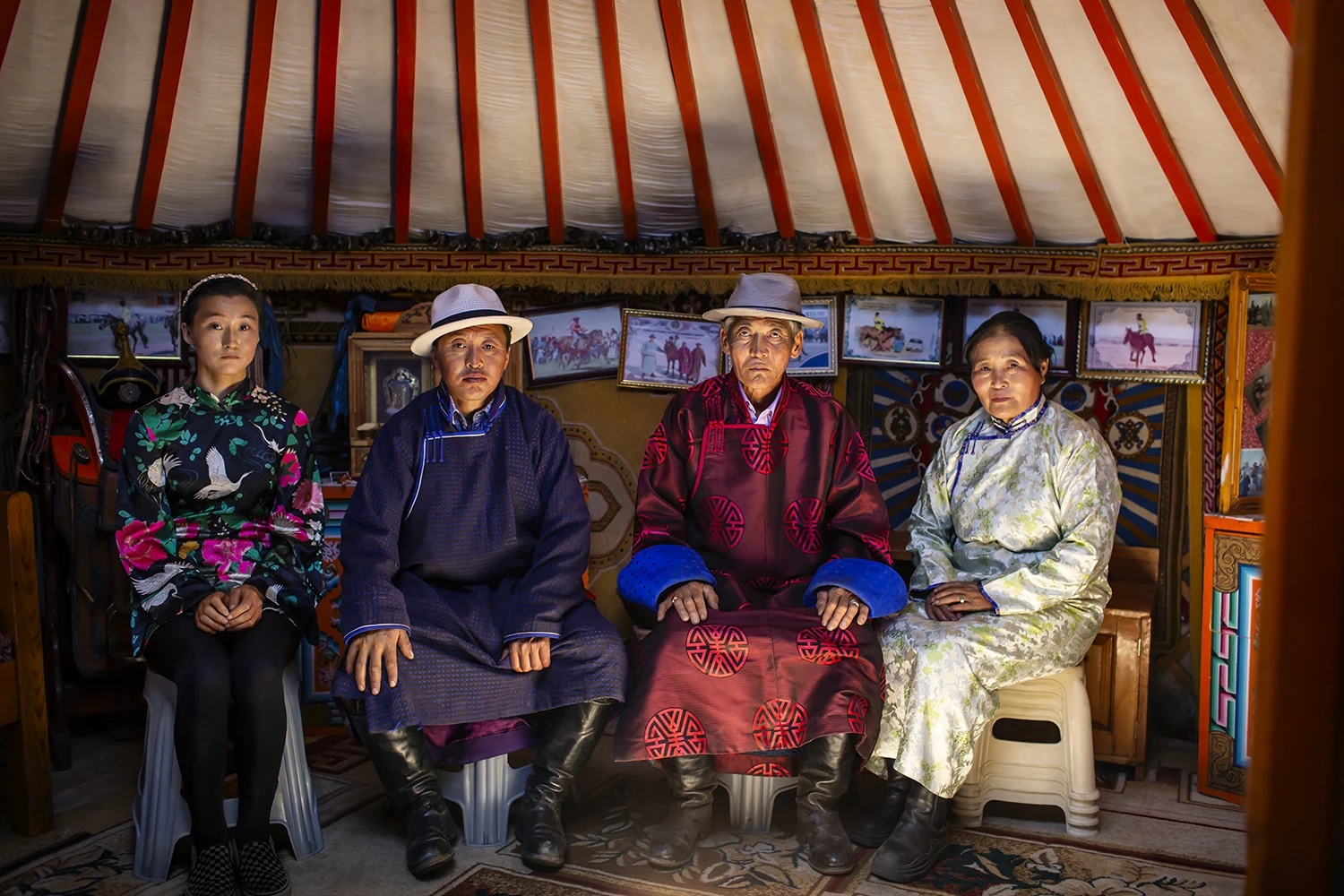
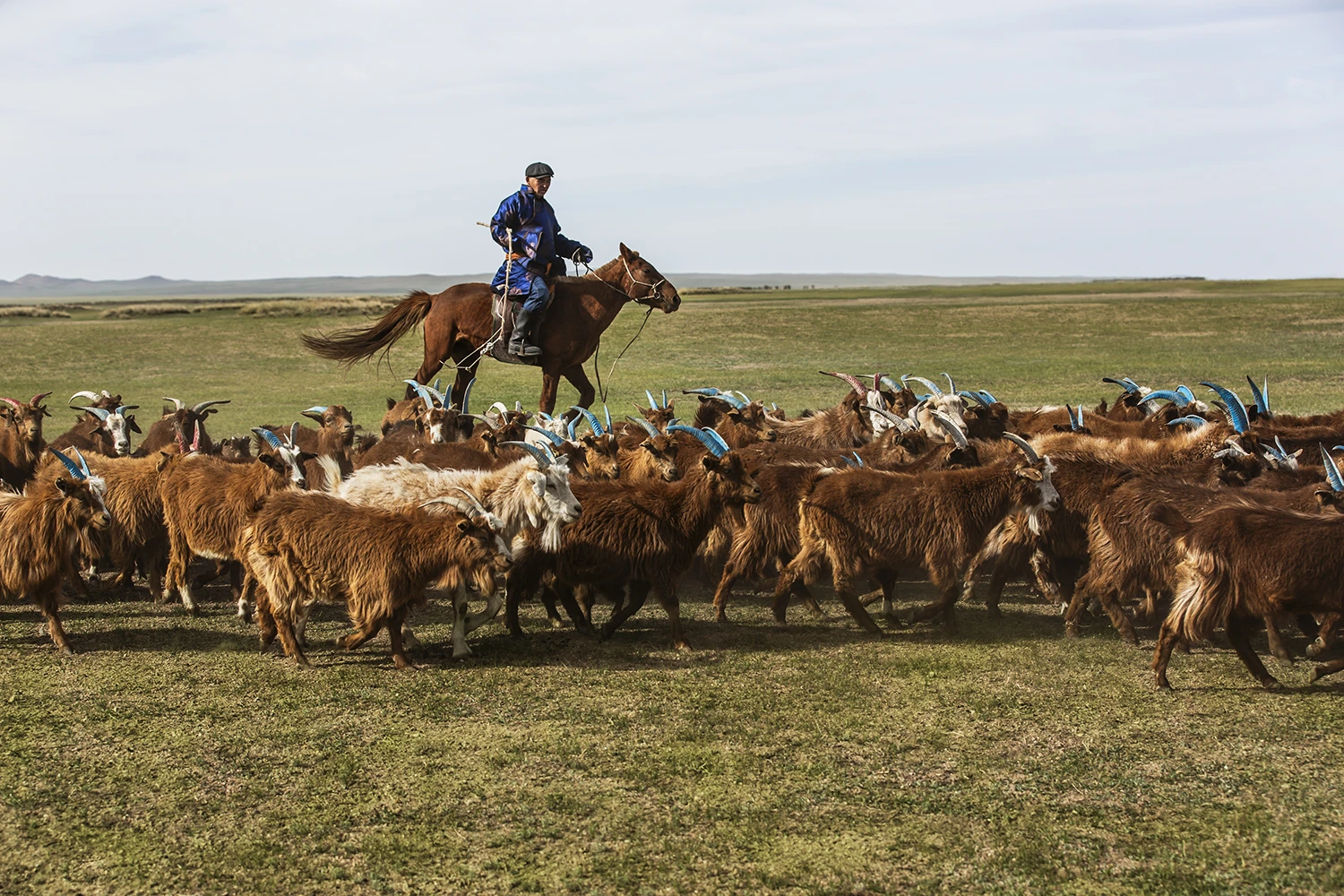
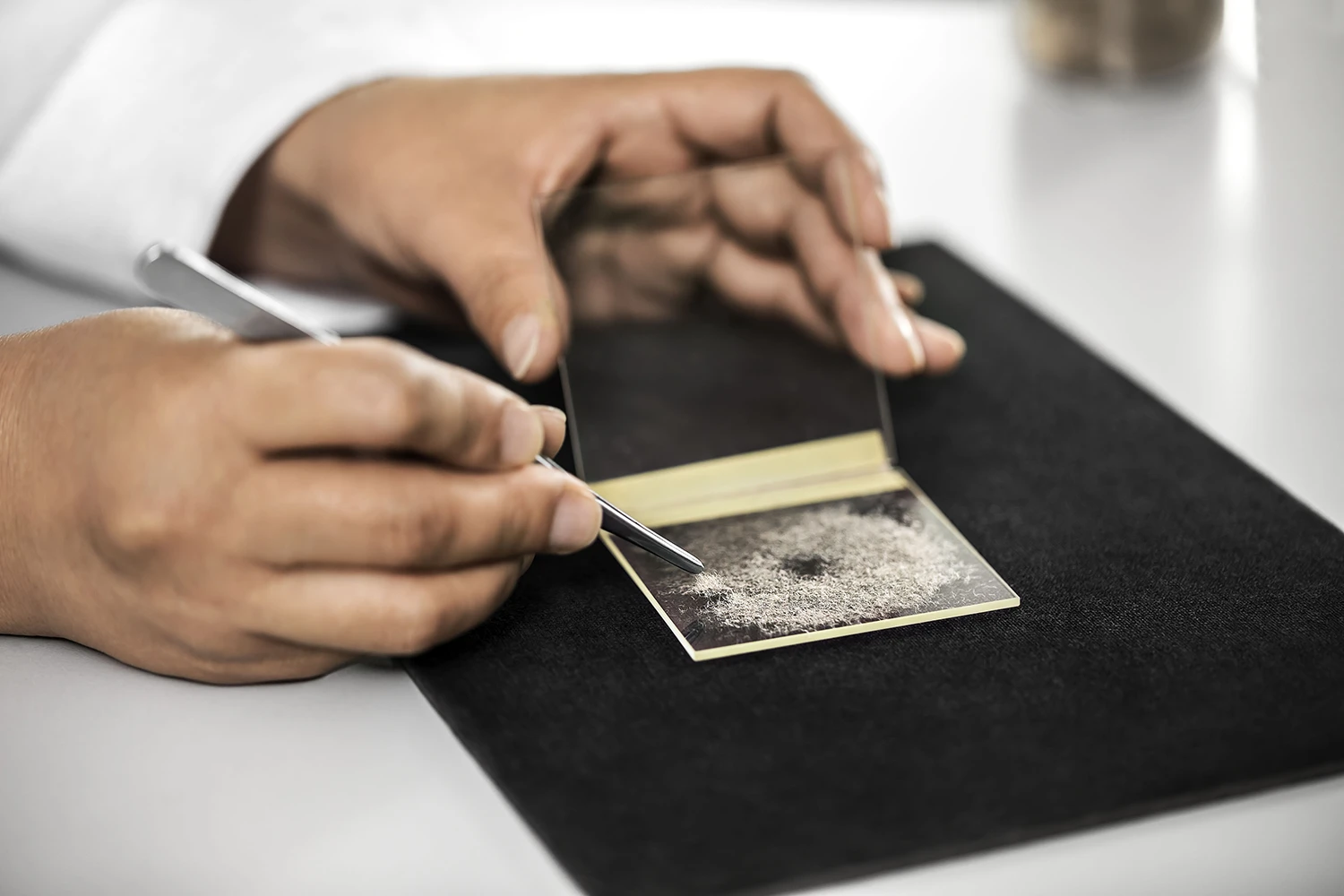
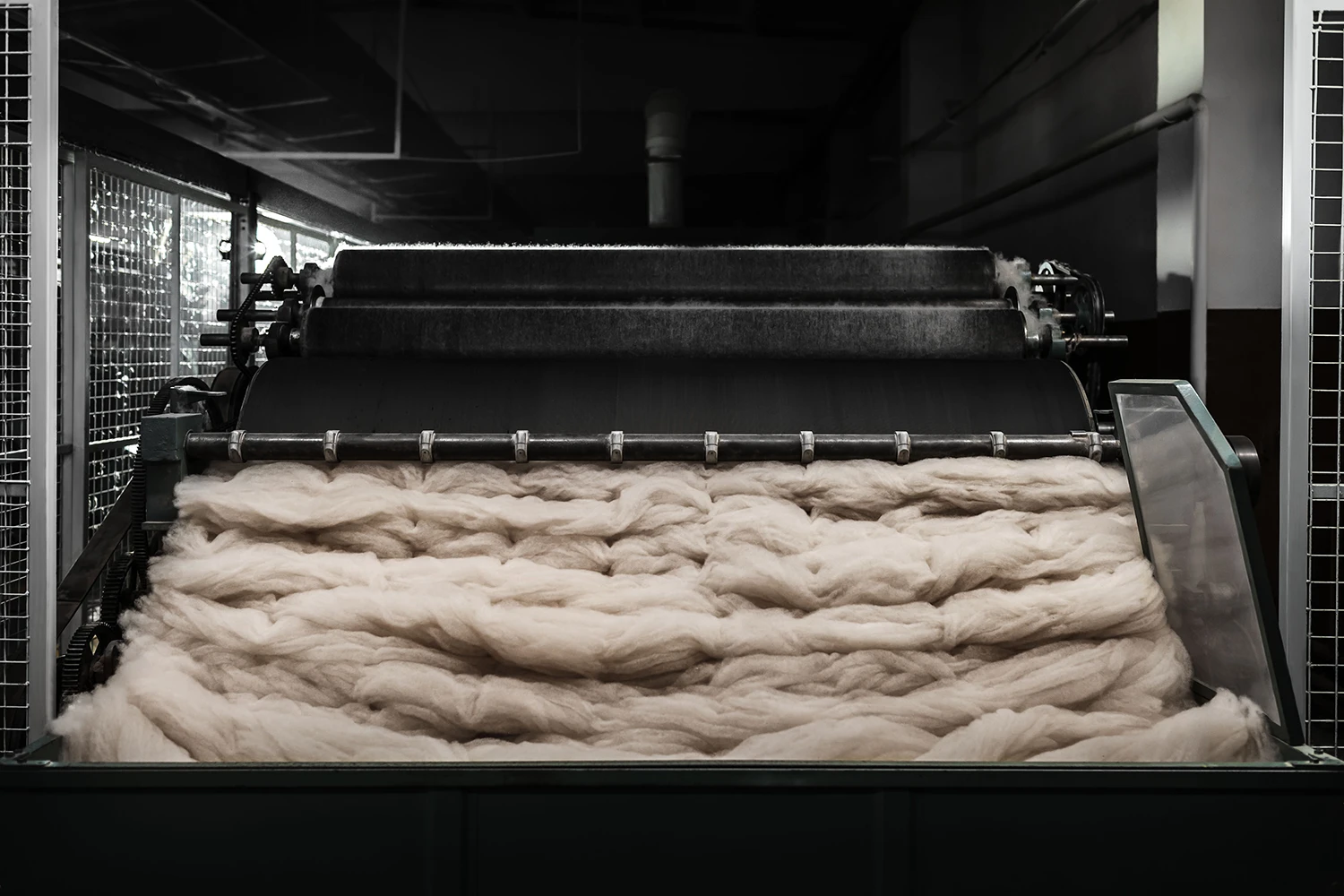
Sailing is just the tip of the iceberg: Field testing goes beyond the yacht
The company has long cultivated a presence in sports that demand endurance and precision. Horse riding, golf, skiing—all serve as arenas to test how fibers and garments perform in real conditions. Jackets and knits are scrutinized on alpine slopes. Cotton and linen shirts are measured against the sun and wind. Cashmere is pushed to its limits against cold and moisture. Every leisure pursuit doubles as a lab for innovation. Events like the Loro Piana Superyacht Regatta in 2009 are live field tests. Participants move through extremes of heat, cold, wind, saltwater. This shows how fabrics stretch, repel, or insulate. The lifestyle narrative reinforces the idea that luxury and comfort are inseparable from functionality. Every adventure is a reminder of the environments these fibers come from.
To match these extremes, Loro Piana’s fabrics undergo technical treatments that turn rare fibers into high-performance tools. The Storm System, introduced in 1994, makes wool, cashmere, and their blends wind and water-resistant without losing softness. The Green Storm System achieves similar protection with a lower environmental footprint. Clima System fabrics regulate temperature and keep wearers comfortable from alpine chill to midday sun. Simpler fibers like linen and cotton are also tested for breathability, UV protection, and wear under stress.
These innovations are trialed in the same environments the brand celebrates: on yachts slicing through the Mediterranean, on ski slopes in the Alps, during remote treks across rugged terrain. It’s a reminder that every fiber carries the story of its source, and every garment is designed to survive the world that produced it.
Loro Piana didn’t begin with yachts or QR codes
The origins of the Loro Piana name date back to the 17th century, when the surname Loro Della Piana first appeared. When the Loro family moved to Piana, a hamlet of the village of Trivero, they took on the surname Loro Piana. Over time, the quality of the wool collected and spun in northern Piedmont gained renown and encouraged the development of expertise in wool working and weaving. Pietro Loro Piana, an engineer by training, brought precision and structural thinking to production. It was in 1924 when Pietro Loro Piana founded the company Ing Loro Piana & C.
The first fabric collection dates back to 1926. In the 1930s, the company produced wool fabrics for men’s suits and coats, featuring the classic pinstripe pattern. In the 1940s, the company shifted to producing heavier and simpler fabrics. During this period, Franco Loro Piana took the reins. He expanded the family’s reach beyond Italy, exporting fine wool and cashmere to Paris, Milan, and Tokyo. Designers relied on Loro Piana fabrics as the foundation for their collections. Quietly, the brand became a benchmark for quality. Franco Loro Piana’s era was more about connection. He built a global network of suppliers, artisans, and clients without ever compromising on standards.
By the end of the 20th century, Loro Piana was no longer known as a wool trader
In the 1980s, his sons, Sergio and Pier Luigi, pushed the company further. The firm tested fibers in extreme conditions and turned rare materials into practical, enduring luxury. By the end of the 20th century, Loro Piana was no longer known as a wool trader. It was now a curator of materials, a laboratory for natural fibers, a brand whose history could be read in the archives as much as in the texture of its cashmere.
The first Loro Piana garment was the famous fringed Grande Unita scarf, made from a piece of cashmere woven in the Piedmontese mill, carefully cut along the edge to create an elongated scarf. The transition from fabric to scarf represented a bridge between Loro Piana’s textile tradition and its new era of accessories and prêt-à-porter. Years later, the Italian Equestrian Sports Federation approached Sergio Loro Piana, a rider himself, to create the outfit of the national team for the 1992 Summer Olympics in Barcelona. Originally intended for just a few dozen pieces, the uniform became Loro Piana’s first iconic outerwear piece—the Horsey®. Its design was adjustable and adaptable, with a deerskin collar, two external side pockets, and a flap with a concealed zipper that allowed the jacket to fold gracefully when seated. This marked a new direction—the creation of leisurewear.
Loro Piana is now part of LVMH: Same heritage, new perspectives
Joining Louis Vuitton Moët Hennessy was a turning point in the history of Loro Piana. In 2013, LVMH acquired 80% of Loro Piana, bringing the family-run brand into its orbit. Since the acquisition, the label has ventured into collaborations that push its reach beyond traditional luxury circles.
Susanna Galstyan
